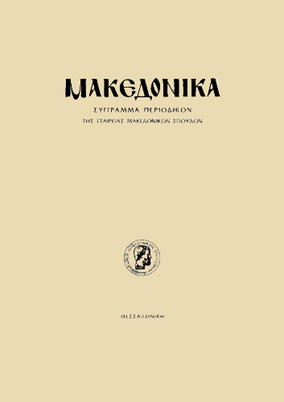Η θέση της αρχαίας Σκαπτής Ύλης
Part of : Μακεδονικά ; Vol.21, 1981, pages 76-92
Issue:
Pages:
76-92
Parallel Title:
The Place of ancient Scapte Hyle.
Section Title:
Articles
Abstract:
Those who have attempted to identify the ancient Scapte Hyle, whichwas the most famous centre of gold-mining on the mainland opposite Thasosin the 6th and 5th centuries B.C., usually lack personal knowledge of the topographyof this area and are not familiar enough with the evidence of ancientauthors. These are the two main fields where the contribution of this articlewill be confined.Most of the scholars have placed Scapte Hyle on or around the MountPangaeum and especially on the NE side of it. There is, however, a disagrementconcerning the exact location of it. It has been situated near the monasteryof Eikosiphoinissa, in the village called Palaeochori, on the hills betweenPalaeochori and Nikisiani, and elsewhere. The author of this article believesthat Scapte Hyle was not a town but a wider area which comprised the valleysof both Nikisiani and Palaeochori. The centre, however, of gold-production,especially in the period when Scapte Hyle flourished, was Nikisiani. Someof the indications for this are the following:a) The heaps of slag («scoriae») are more extensive here than in the neighbouringplaces.b) Herodotus says that the tribe of Satrai, who had the main share in thegold-production, used the steep rocks of Pangaeum as a refuge when attackedby an enemy. The side of this mountain facing Nikisiani is the most inaccessibleof all.c) There is plenty of water in this valley.d) There are names of places, like «Silver holes», «The water of gold» andso on, which might be reminiscences of the existence of metal-workings in thisarea.e) Scapte Hyle means «dug wood» and this is the most richly woodedside of Pangaeum.
Subject:
Subject (LC):
Notes:
856:https://ejournals.epublishing.ekt.gr/index.php/makedonika/article/view/5989, DOI: https://doi.org/10.12681/makedonika.428
Electronic Resources:




